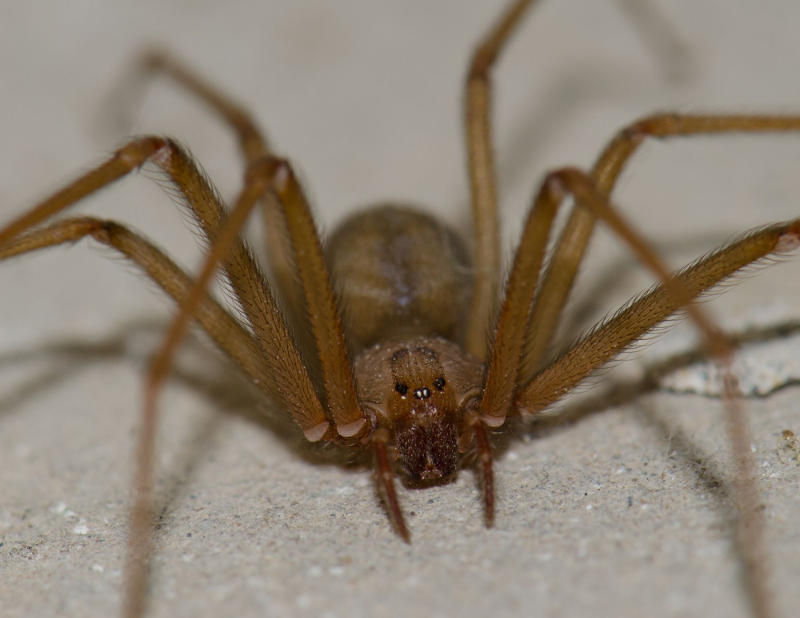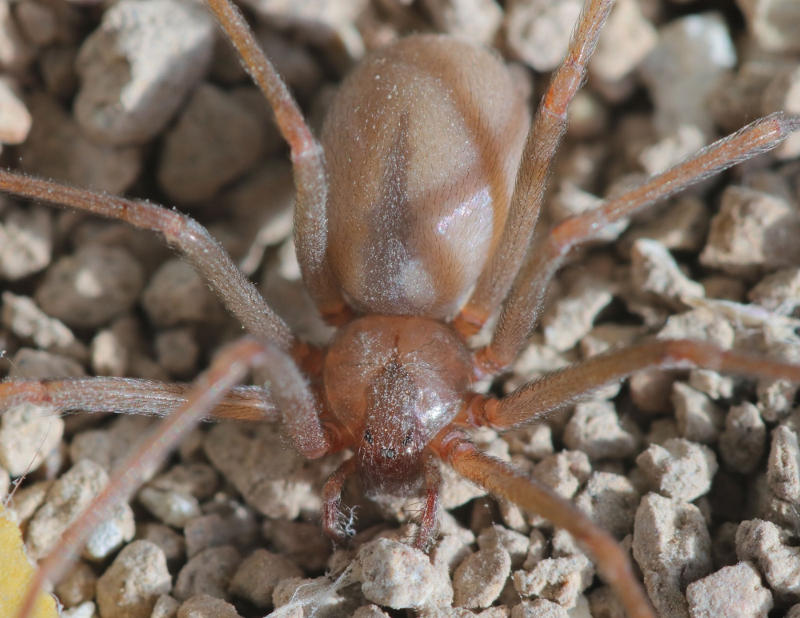If you believe your grade-school science teacher, you probably think spiders are wonderful at catching other pests like flies and mosquitoes in their webs. It turns out your teacher only told you half the story about spiders. The bite of certain spider varieties such as the recluse spider can cause severe damage to skin, nerves, and blood vessels. So if you're home has been invaded by spiders, act fast and get someone to your home for pest control ASAP!
Here’s what you need to know about recluse spiders, where they live, and how to find them!

The recluse is a shy spider with an audacious bite. As its name implies, this spider hides to protect itself and only bites when it’s really desperate. While the most commonly know recluse is the Brown Recluse, the recluse spider can also be tan, black, or gray in color. In Yuma, we're a likely to fine the Arizona Recluse or Desert Recluse
Reproduction is always a key consideration for those interested in spider control. The female recluse spider produces several sacs of eggs between the months of May and July. Each sac has about 50 eggs, and take one month to hatch. You can expect a recluse spider to have a lifespan of 12 to 24 months.
If you think that Yuma’s stark, desert environment is enough to get rid of spiders, think again. The recluse spider is known for its resilience. It can survive for several months without food or water.
While there are several places for the recluse spider to lounge on your property, it arguably likes being outdoors. You’ll find this spider hiding under fallen tree branches, under rocks, and in piles of decaying leaves. The recluse also likes to hang out around firewood piles. It loves to hide in dark, cluttered places during the day and hunt prey at night. One of our customers even found a cluster of recluse eggs in her pool’s filter!
If a recluse spider makes its way into your home, you have a real problem and need to call professional spider control experts. It usually means that there are others and that a colony of dangerous critters has formed in your house. When indoors, the recluse spider likes to hide in dark basements, garages, and storage closets.
Practical spider control methods can help you to avoid hazards related to the recluse spider. Eliminate clutter in and around your home. By raking leaves and cleaning workbenches and gardening equipment, you’ll eliminate the spiders’ webs and the places where they like to hide. Make sure to wear gloves when handling firewood. If you suspect a spider infestation in your home, always shake out your clothes and shoes before getting dressed.

While the recluse spider likes to hide, it can hold its own when threatened. Its venomous bite can cause necrosis, which is cell death. The recluse spider rarely bites people or pets. When a recluse spider bites a person, it’s usually because the spider is hiding in clothing items and is accidentally caught near a person’s skin.
A few hours after a recluse spider bite, the person’s skin is usually red and swollen near the bite area. The bite area can blister and form an ulcer. Eventually, the ulcer turns a dark color that indicates that the skin tissue is dying. Everybody’s physical make up is different, so you could have a less severe reaction to a recluse spider bite than your neighbor down the street.
If you believe that you’ve been bitten by a recluse spider, the National Institute of Health recommends that you wash the affected area and apply ice to it in 10-minute intervals. It advises you to go immediately to the emergency room and bring the spider with you for identification purposes.
One of the most distinguishing features of the recluse spider is its eyes. It has three pairs of eyes that form a semi-circle on the front of its body. Most other spiders have eight eyes.
Don’t want to get close enough to make eye contact with a potential recluse spider? Check out its back instead. The recluse spider is often called the "fiddle-back spider" because it has a violin-shaped marking on its back. Since the rest of the spider’s body is uniform in color, this marking really stands out.
According to experts at the University of Arizona’s Cooperative Extension Program, the notorious brown recluse spiders haven’t set up house in our state. However, Arizona is home to a couple of their dangerous cousins, Arizona recluse and desert recluse spiders. Since these recluse spiders also inflict tissue-damaging bites, there’s no need to become attached to them. When you need to get rid of spiders in Yuma, call the Hitman.
Hitman Pest of Yuma specializes in taking out all types of pests that include the recluse spiders that plague Arizona homeowners.